...Tick, Tick, Tick, Tick, Tick, Tick, Tick, Tick, Hummmmm...
Historians generally credit the development of the first watch to German locksmith Peter Henlein,1 although many details about its invention have been lost, perhaps appropriately, in the mists of time. The portable device Henlein created in the 16th century ticked as it tracked the hours--it only had one hand.2 All watches that followed made a similar sound...until October 25, 1960.
The
essence
of
the
Accutron
is
a
tuning fork that
oscillates at 360 Hz. Powered by a
battery about the size of an aspirin, it provides a space-age way
of
counting
seconds, minutes, and hours and produces the watch's distinctive
hum,4
a tone
slightly above F#.5 "Some
musicians tune their instruments using their Accutrons," says Bob
Piker
of
Normal, Illinois, who repairs and restores Accutrons and
sells
some that he buys and refurbishes.
Max
Hetzel
The watch he developed was introduced to potential customers in Bulova print ads with headlines such as, "Why you should wear Accutron instead of a watch"9 that appeared in leading magazines of the day, including Look, National Geographic, Popular Mechanics, and The Saturday Evening Post.
Display
Models and Conversions
Although certainly a marvel, the Accutron wasn't a hit until an unintended consequence gave it an unusual appearance--one that appeals to people who admire form-follows-function design. Piker tells the story:
dials.
Bulova wanted
jewelers to be able to show their
customers
how
different the Accutron was
inside, so the
company
made
'display
models'
with
the
dials
removed, allowing
people to view the
watch's
internal
parts, including the
tuning
fork and
electronics."
thought that the watch in the
jeweler's window was a
standard
model
started
asking
to
buy
one.
Dealers
who
didn't
want to lose a sale were happy to
sell the 'display
model'
and
the
strangely
attractive
watch
started
selling
like hotcakes."11
Bulova also began working on a production version that came to be called Spaceview, a name that took advantage of Accutron's association with NASA, which employed the tuning fork timekeeping mechanism before it was introduced to the public. Hetzel's movement, in fact, helped send America's first satellite, Explorer, into orbit,12 as described in a Bulova press release:
four years Accutron
timers were an important feature of
the Explorer
satellite program, essential for the control of
data
transmissions." 13
Accutron
timers
continued soaring into space, and on July
20, 1969, one was placed on the Moon's Sea of Tranquility when the
Apollo 11
mission landed the first humans on the lunar surface.14
Spaceviews began
rolling out of the Bulova plant in
1961. Early models were similar to
conversion-kit Accutrons and sported crystals with dots and
dashes
that marked the hours and minutes.
In 1962, the decorated crystal was replaced by a "chapter" ring installed around the exposed electronic and mechanical parts. In horology—the art and science of making timepieces or measuring time—chapter refers to the marks or numerals designating divisions of time on a clock or watch.
I grew up in the sixties and liked the Spaceview the first time I saw one. Being able to see the workings of the watch was groovy, in the parlance of the era, and appealed to my sense of aesthetics and interest in science and engineering. The odd mixture of copper coils, resistors, tuning fork, and other parts got my attention and held it.
Years
later
I
was
working
in
downtown
Milwaukee when I
was stopped in my tracks by a stainless steel Spaceview I saw in a
pawn
shop
window. I went inside, asked the price, and wound up buying it for
$40.00. It kept perfect time, and I
wore
it
regularly for the next dozen years, replacing the battery as
needed.
In the early nineties I was on a video shoot when a crew member named Keith noticed it. He said he had a similar watch in gold that was presented to him upon his graduation from high school. It wasn't working, had sat in a drawer for years, and he no longer wanted it. Was I was interested in buying it?
Spaceview
Service
"Soul
of Watches"
Hobby
Becomes Business
"From my own collecting, I knew there was a lot of interest in Spaceviews," he continues, "so a couple of years ago it struck me that I could be one of those lucky people who takes a hobby he loves and turns it into a business."
40th
Anniversary
Spaceview
50th Anniversary Accutron
Bulova recently announced it will offer a limited edition Spaceview to commemorate the 50th anniversary of Accutron technology. The watch will feature a tuning fork mechanism similar to the original Accutron, a stainless steel case, and an alligator strap. First impression from a small photograph is it looks a like a combination of early marks-on-the-crystal Spaceviews and later chapter-ring models.19
Time
Told Beautifully
I'm glad to have my Spaceviews working again. Both have an original Accutron band that is appropriate to the year the watch was made, 1966 for the stainless steel Spaceview and 1970 for the gold.
Moreover, after all these years, I still pause now and then to examine the intricate connections and electronics of the high-tech, tuning-fork mechanism and occasionally put the watch to my ear to hear that slightly above F# hum. I even use my Accutrons to tell time although with a Spaceview that seems secondary.

Courtesy of Bob Piker www.mybob.net.
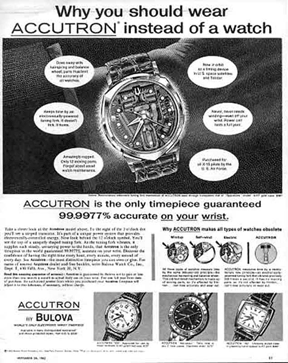
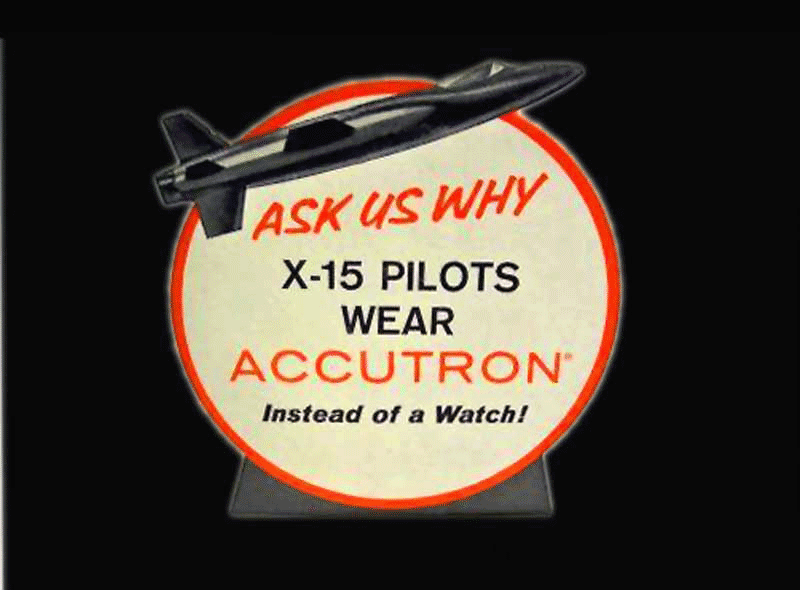
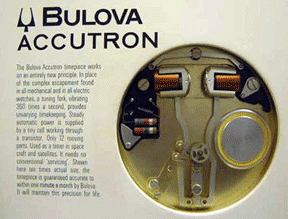

Early Accutron demonstrator.
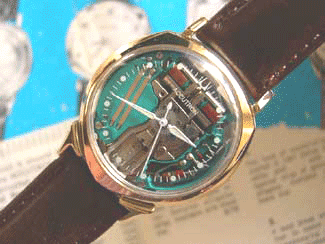
Courtesy of Bob Piker www.mybob.net.
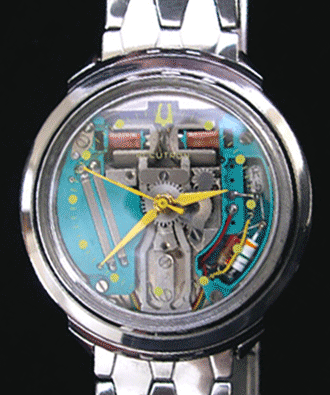
Courtesy of Bob Piker www.mybob.net.
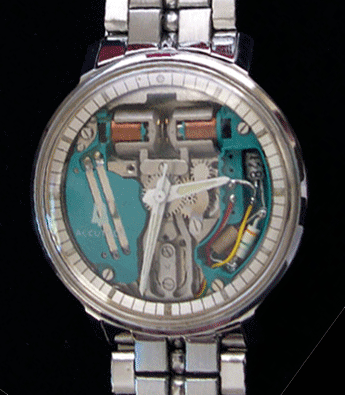
ring hour and minute marks.
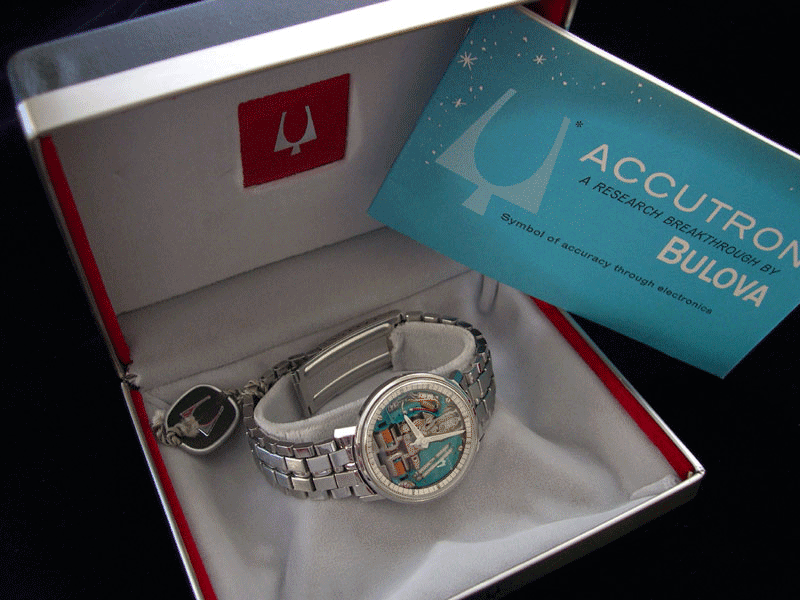
Courtesy of Bob Piker www.mybob.net.
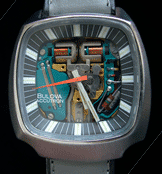
Bulova's 100th Anniversary in 1975.
Courtesy of Bob Piker www.mybob.net.
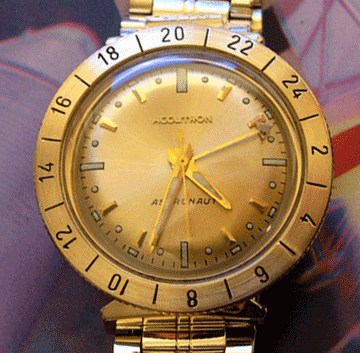
Courtesy of Bob Piker www.mybob.net.
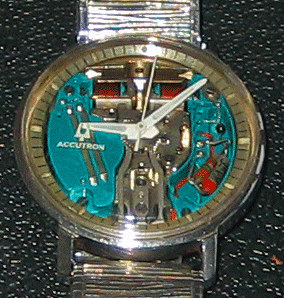
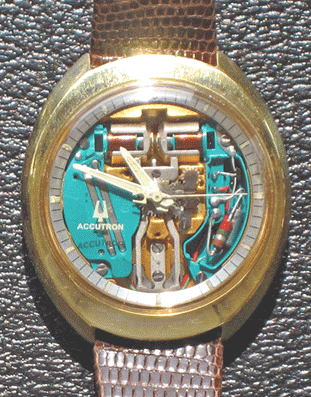
Author's 1970 Spaceview.
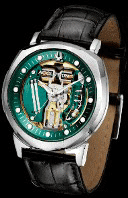
Accutron 50th
Anniversary Spaceview.
Courtesy of Bulova.
Return to
tswrites.com
ted@tswrites.com
1 Colliers Encyclopedia 1986 USA to Zwingli, Volume 23 Page 324.
2 http://german.about.com/library/weekly/aa031300a.htm
3 http://www.bulova.com/about/history.aspx
4 http://www.xs4all.nl/~rkeulen/watch/bulova.html
5 http://www.accutron214.com/AccutronQ&A.htm#musical%20note
6 Newsday, March 10, 1961.
7 http://www.elektron.demon.co.uk/maxpics.html
8 Newsday, March 10, 1961.
10 Ibid.
11 Ibid.
13 Bulova press release, "Bulova Unveils Spaceview 21—The Accutron For The New Century." September 17, 2001.
14
Ibid.
15 http://www.dollartimes.com/calculators/inflation.htm
16 http://www.bulova.com
19 March 17, 2010 Bulova Press Release: "Bulova Corporation Celebrates A Milestaone In Timekeeping Innovation And Introduces A Ground-breaking New Technology."
20 Ibid.